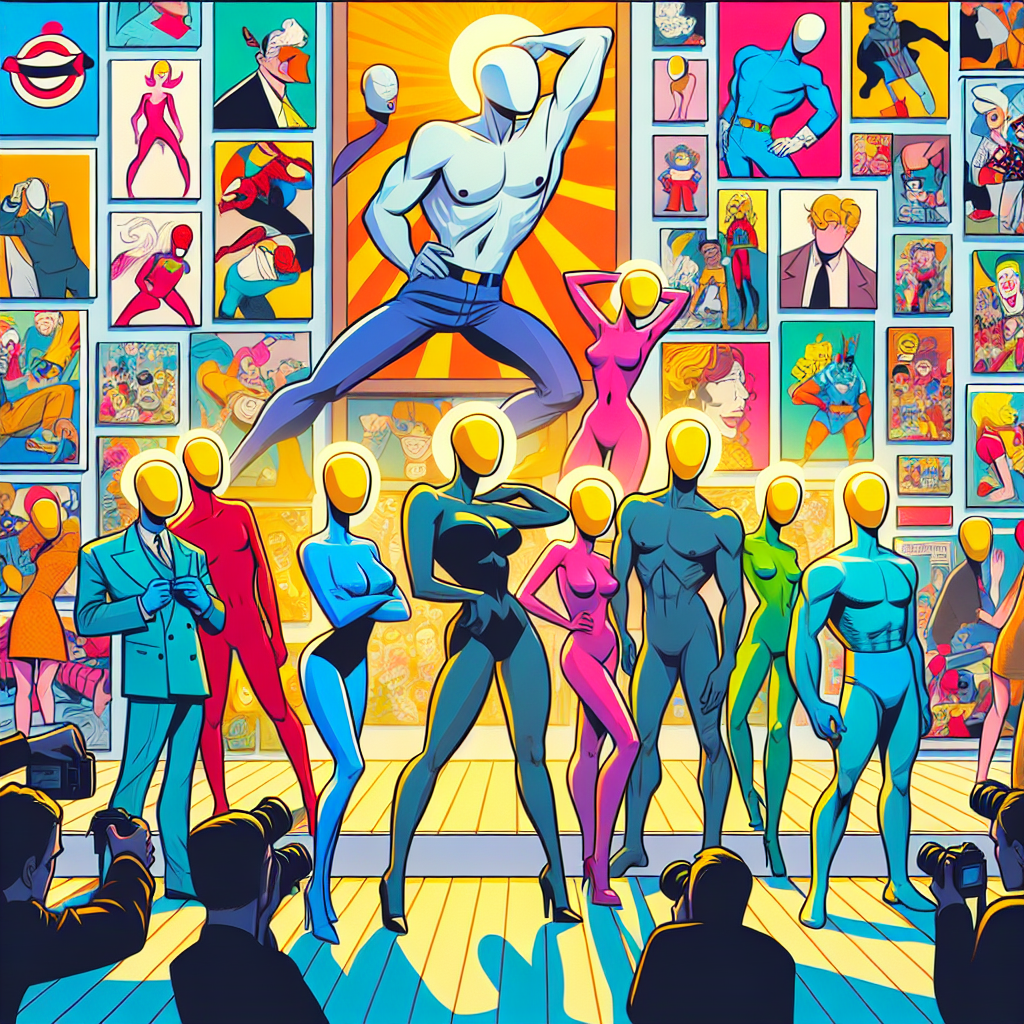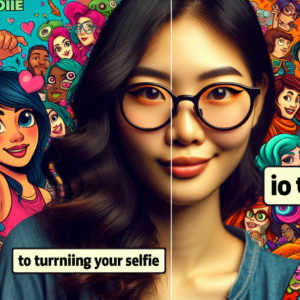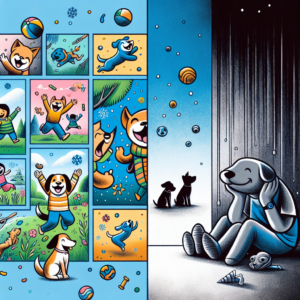Imagine a world where characters speak volumes without uttering a single word, where emotions are conveyed through gestures and actions rather than facial expressions. This is the world of faceless characters in cartoon art, a trend that has taken the art world by storm in recent years.
From the charming simplicity of characters like Hello Kitty to the enigmatic appeal of the Slender Man, faceless characters have captured the hearts and minds of audiences across the globe. But what is it about these blank-faced creations that make them so appealing? In this article, we’ll delve into the reasons behind the contemporary popularity of faceless characters in cartoon art.
The Rise of Faceless Characters
While the concept of faceless characters is by no means a new one, it has experienced a resurgence in recent years. In a world where we are bombarded with information and stimuli at every turn, the simplicity of faceless characters offers a refreshing change of pace. By stripping away the distractions of facial features, these characters are able to convey universal emotions and experiences that resonate with a wide range of audiences.
Faceless characters also have a unique ability to transcend language and cultural barriers. Without distinct facial features that can be perceived differently based on cultural norms, these characters can be understood and appreciated by people from all walks of life. This universal appeal has helped to fuel the rise of faceless characters in cartoon art, making them a popular choice for artists and audiences alike.
The Appeal of Ambiguity
One of the key reasons behind the contemporary appeal of faceless characters is the element of ambiguity they bring to the table. By leaving their faces blank, these characters invite viewers to project their own emotions and experiences onto them, creating a more personal and intimate connection. This open-ended nature allows for a wide range of interpretations, making faceless characters a rich and dynamic canvas for artists to explore.
Additionally, the ambiguity of faceless characters can add an air of mystery and intrigue to a piece of art. By leaving their emotions and intentions up to interpretation, these characters draw viewers in and encourage them to engage with the artwork on a deeper level. This sense of mystery and complexity can make faceless characters more compelling and memorable than their more expressive counterparts.
The Power of Symbolism
Another reason behind the contemporary appeal of faceless characters in cartoon art is the power of symbolism they possess. By stripping away facial features, these characters become symbols of universal themes and emotions, such as innocence, curiosity, or fear. This symbolic nature allows for a more direct and impactful communication of ideas, making faceless characters a powerful tool for storytelling and expression.
Furthermore, the lack of facial expressions can serve to enhance the emotional impact of a piece of art. By forcing viewers to focus on body language and actions, faceless characters can create a more immersive and emotionally resonant experience. This heightened sense of emotion can make the artwork more memorable and impactful, leaving a lasting impression on those who view it.
The Versatility of Faceless Characters
One of the most appealing aspects of faceless characters in cartoon art is their versatility. From cute and whimsical characters to dark and mysterious figures, faceless characters can be adapted to suit a wide range of styles and genres. This flexibility has made them a popular choice for artists looking to explore new creative avenues and push the boundaries of traditional cartoon art.
Faceless characters are also well-suited to a variety of mediums, from traditional pen and paper to digital animation. Their simple and iconic designs make them easy to reproduce and adapt across different platforms, allowing for greater exposure and accessibility to a wider audience. This versatility has helped to solidify the staying power of faceless characters in the ever-evolving world of cartoon art.
Conclusion
In conclusion, the contemporary appeal of faceless characters in cartoon art can be attributed to a variety of factors, including their simplicity, universality, ambiguity, symbolism, and versatility. By stripping away facial features, these characters are able to convey universal emotions and experiences that resonate with audiences across cultures and languages. Their open-ended nature invites viewers to project their own emotions onto them, creating a more personal and intimate connection. Additionally, the symbolic power of faceless characters can enhance the emotional impact of a piece of art, making it more memorable and impactful.
Overall, faceless characters offer a unique and engaging canvas for artists to explore, allowing for a wide range of interpretations and creative possibilities. Whether they are cute and whimsical or dark and mysterious, faceless characters have captured the hearts and minds of audiences around the world, solidifying their place as a timeless and beloved trend in cartoon art.
FAQ
Why do some artists choose to create faceless characters in their artwork?
Artists may choose to create faceless characters in their artwork for a variety of reasons. Some artists find that faceless characters offer a more universal and relatable canvas for viewers to project their own emotions and experiences onto. Others may appreciate the ambiguity and mystery that faceless characters bring to a piece of art, allowing for a wide range of interpretations and creative possibilities.
What are some popular examples of faceless characters in cartoon art?
Some popular examples of faceless characters in cartoon art include Hello Kitty, Slender Man, and the Moomins. These characters have captured the hearts and imaginations of audiences around the world, thanks to their simple and iconic designs that transcend language and cultural barriers. Whether they are cute and charming or dark and enigmatic, faceless characters have become a beloved trend in contemporary cartoon art.
How can artists make faceless characters convey emotions and experiences without facial expressions?
Artists can make faceless characters convey emotions and experiences through body language, gestures, and actions. By focusing on these elements, artists can create a more immersive and emotionally resonant experience for viewers, allowing them to connect with the characters on a deeper level. Additionally, artists can use symbolism and storytelling techniques to enhance the emotional impact of their artwork, making it more memorable and engaging.








+ There are no comments
Add yours